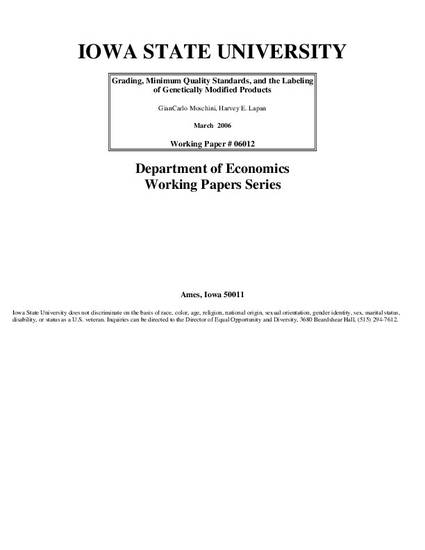
In this paper we relate the economics of labeling genetically modified (GM) products to the theory of grading and minimum quality standards. The model represents three stages in the supply chain (farm production, marketing handlers, and final users) and allows explicitly for the accidental co-mingling of non-GM products at the marketing stage. Regulation takes the form of a threshold level of purity for non-GM products. The paper also presents a novel demand specification for differentiated GM and non-GM products that is particularly useful in our stochastic framework. First, we find that if the threshold purity level for non-GM products is too strict, this necessarily leads to the disappearance of non-GM product from the market. Second, we show that some quality standard is in the interest of farmers as well. Indeed, we show that the standard that is optimal from the perspective of producers is actually stricter than what is optimal for consumers and for societal welfare. We conclude with comparative statics effects that illustrate the impact of the model’s parameters on market equilibrium and on the welfare- maximizing regulatory standard.
Available at: http://works.bepress.com/harvey-lapan/51/
